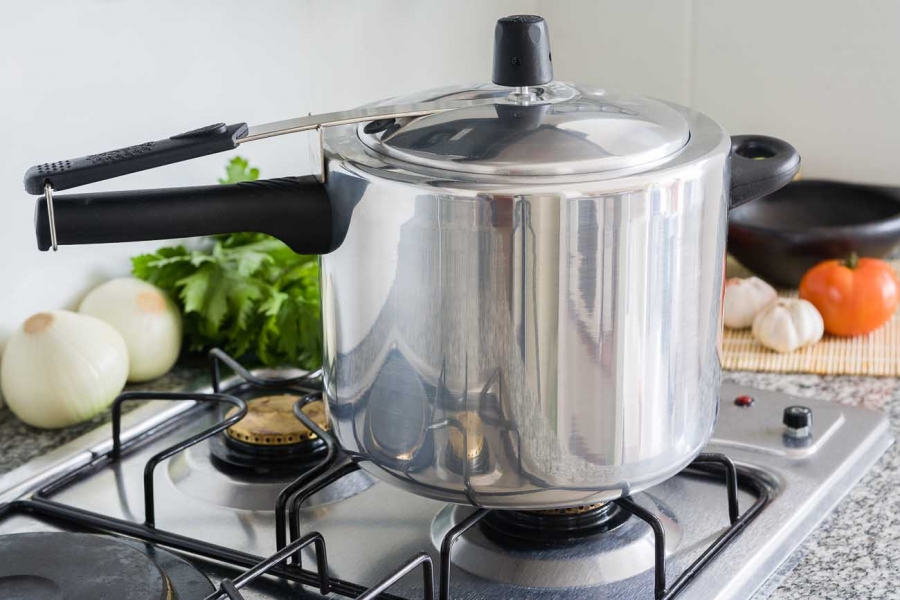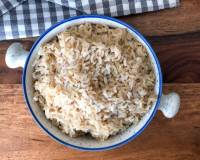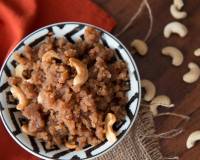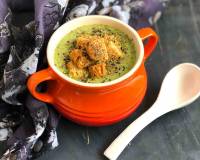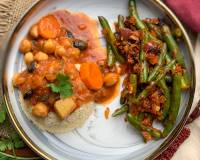Pressure-cooking is a method of cooking in a sealed vessel that does not permit air or liquids to escape below a preset pressure. Foods are cooked much faster in pressure-cooking as it uses much less water used than boiling.
Several foods can be cooked together in the pressure cooker, either for the same amount of time or added later and timed accordingly. Manufacturers provide steamer baskets to allow more foods to be cooked together inside the pressure cooker. I have below given a few steps for cooking the more common vegetables. If you are not used to pressure-cooking method, experience will make you better at using it.
Pressure Cooker is an absolute must in every kitchen. This equipment helps cut down the cooking time, preserves nutrition and save fuel. It is excellent equipment for cooking, rice, lentils and legumes by reducing the time taken to cook them to half as compared to other methods.
In this article, I have shared the various sizes of pressure cookers you will need for a family of 4 and even when you have a few expected guests for festivals and special occasions.
1- Pressure Cooker Size and Materials
Material Choice: I prefer using Stainless Steel or Hard Anodized Pressure cookers. The main reason for choosing stainless steel or hard anodized is that they react less to the foods when you place them directly into the pressure cooker to cook. So if you cook things directly in the pressure cooker, then I suggest you go for stainless steel or hard anodized.
2-Liter Size Pressure Cooker
Most often for cooking everyday vegetables you would need a smaller size pressure cooker of 2 Liters capacity. The below examples will show you how much a 2-Liter pressure cooker can comfortably hold and cook.
500 grams of beans needs 3 tablespoons of water to cook in the pressure cooker. And 500 grams of beans will result in 4 to 5 servings for the vegetable for a family.
500 grams of potatoes will need just 1/4 cup of water (4 tablespoons) to cook the potatoes, which will again result in 4 to 5 servings of the vegetable for the family
220 grams of rice or lentils (1 cup) required approximately 2.5 cups of water and will again yield 4 to 5 servings for a family
1 cup = approximately 220 grams of uncooked rice or lentils (approximately)
Click here to see the 2-Liter Stainless Steel and 2-Liter Hard Anodised Model that I use in my kitchen.
3.5-Liter Pressure Cooker
The 3.5-Liter pressure cooker can cook double or a little more than double of the 2-Liter pressure cooker. Having a larger room in the pressure cooker helps you cook larger quantities of the vegetables, rice and pulses evenly under pressure.
Having a 3.5-liter pressure cooker helps you cook legumes (300 to 350 grams) like rajma, chola along with the masala’s and even 2.5 cups (400 grams) of uncooked rice. It also makes it convenient to cook Biryani and other mixed rice and lentil dishes directly in one single pot.
Click here to see the 3.5-Liter Stainless Steel-Liter Stainless Steel and 3.5-Liter Hard Anodised Model-Liter Hard Anodised Model that I use in my kitchen.
5 or 6 Liter Pressure cooker
The 5-liter or 6-liter pressure cookers work well, when you want to stack multiple dishes like rice, lentils and vegetables and cook them all together at once. These large size pressure cookers are also useful when you have large family gatherings and you want to make large quantities of rice, dals, chola or rajma or any other dals.
Click here to see the 6-Liter Stainless Steel Pressure Cooker that I recommend
2- How to use a Pressure Cooker?
Below I have decribed the tips and tricks to pressure cook, vegetables, root vegetables, rice, lentils and legumes. These are among the vegetarian dishes you will use the pressure cooker for cooking.
Steps for cooking greens, green vegetables and carrots in the pressure cooker
- Place the 500 grams washed and cut vegetables in the pressure cooker with its weight on along with a little salt and about two tablespoons of water.
- Once you hear the first whistle, turn off the heat.
- Place the pressure cooker, under cold running water to release the pressure immediately. Vegetables don’t need more cooking time, and hence it’s a good idea to release the pressure.
- Once the pressure is released after running it under cold water, open the pressure cooker. The reason we release the pressure immediately is to ensure that the greens don’t lose their color and don’t get over cooked. You can now use the vegetables as desired.
Click here to watch the video recipe of how to cook vegetables in a pressure cooker.
Steps for cooking potatoes and other root vegetables in the pressure cooker
- Place the 500 grams of potato or other root vegetables either whole or halved in the pressure cooker. Add 1/4 cup of water and place the weight on.
- Cook the root vegetable on high heat. After the first whistle, turn the heat to low and simmer for three minutes.
- Turn off the heat and allow the pressure to release naturally. Roots take a longer time to cook, hence wait for the pressure to release naturally, as opposed to running them under cold water.
- Once the pressure is released naturally, the root vegetables will be ready for use.
Click here to watch the video recipe of how to cook root vegetables in a pressure cooker
Steps for Cooking Rice in the pressure cooker.
There are a variety of rice grains available and you might choose a variety that your family has been eating for generations or you might want to try another new variety. The variety of rice grain used makes a difference in the texture and graininess of the rice. The older the rice the longer it takes to cook, the more polished the rice is, it tends to get cooked faster and also mushy if there is excess water. With practice and the depending on the kind of rice you use, you will be able to arrive at the correct water proportion for cooking rice. The pressure cooker method and the sauce pan method, both yield different textures of rice. If you like soft sticky rice, then pressure cooker accomplishes that very easily. If you are looking at a grainy texture then sauce pan method is a better method.
- As a general rule, use about 2 cups of water per cup of long-grain white rice, but you may need to experiment a little to find the amount you like best. Brown rice requires more water, while short grain rice requires less. Keep in mind that more water gives you softer, stickier rice that is great for lentils and curries whereas less water results in firmer rice.
- Rinse and pick the rice well under running water.
- Place the one cup of washed rice along with two cups of water in the pan of the pressure cooker. Keep the weight on the pressure cooker.
- Cook the rice in the pressure cooker on medium high heat and after the first whistle turn the heat to low and simmer the rice for five minutes.
- Turn off the heat and allow the pressure to release naturally. Rice takes a longer time to cook, hence wait for the pressure to release completely.
Click here to watch the video recipe of how to cook rice in a pressure cooker
Steps for Cooking Lentils & Legumes in the pressure cooker
It is very difficult to determine the precise amount of water and the length of time that is required to cook the different types of pulses. Both the time and water factor depend on the age of the pulses. The older the pulse, the longer the time it takes to cook, but there is no way of telling how old the pulse is. To be safe, it is a good practice to shop from stores that have a steady sale and restock. Also take care not to buy beans that look stale, have holes in them or have a wrinkled skin. Make sure to check for worms or little insects inside these packets or avoid packets with excessive white powdering. Wash and pick the pulses to make sure there are no small stones or bits of dust inside. Rinse them under water.
- For lighter pulses/lentils like pigeon pea, yellow mung, green mung, bengal gram and the like; place one cup of washed lentils along with 2 cups of water with its weight on.
- Cook the lentils in the cooker with heat on medium high and after the first whistle, turn the heat to low and simmer the lentil for 5 minutes.
- Turn off the heat and allow the pressure to release completely before you can open as lentils take a longer time to cook. Once the pressure is released they will be ready for use.
Click here to watch the video recipe of how to cook lentils in a pressure cooker.
- For heavier pulses/legumes like chickpea, kidney beans, and the like; soak them in water completely immersed for a minimum of 8 hours before they can be pressure cooked (one cup of pulse to 3 cups of water). Drain the water that it was soaked in.
- Place the soaked pulse along with 3 cups of fresh water in the pressure cooker with its whistle on.
- Allow the whistle to blow 5-6 times on medium high heat; turn the heat to low and simmer for another 15 to 20 minutes before you can turn off.
- Wait for the pressure to release completely before opening.
Note: The cooking process continues in the pressure cooker even when the heat is turned off.
Click here to watch the video recipe of how to cook legumes in the pressure cooker
I hope you found this article informative and you were able to make the right choise in buying a pressure cooker. Do feel free to ask any questions you have in the comments below.
Pressure Cooker Image via ShutterStock

